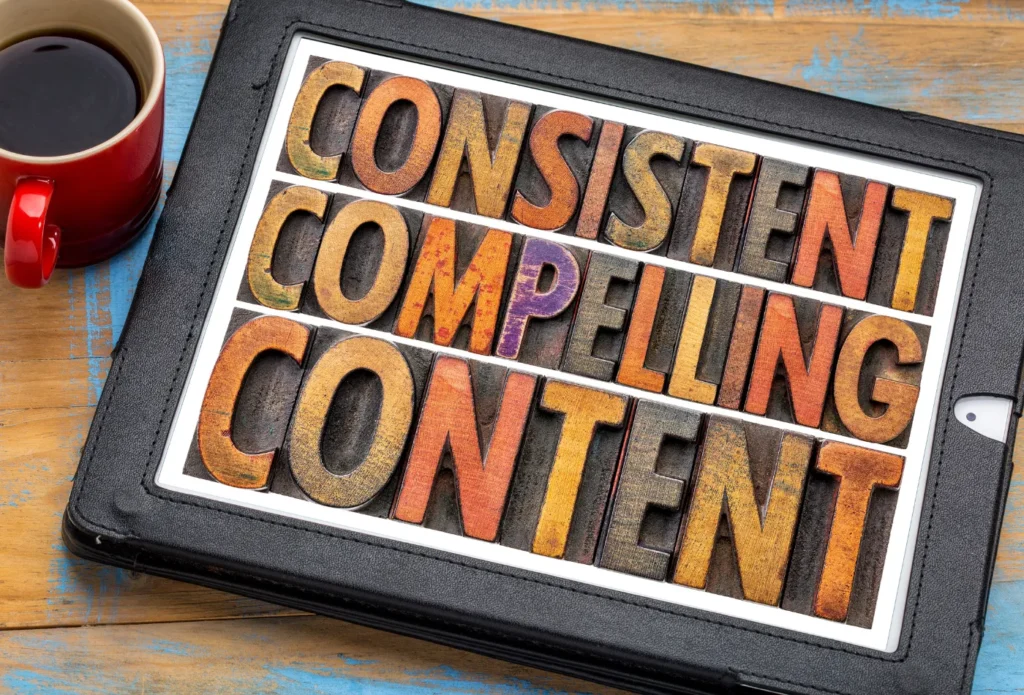Creating a compelling listing is essential for attracting buyers and successfully selling your online business. A well-crafted listing not only highlights the strengths of your business but also builds trust and communicates value to potential buyers. In this comprehensive guide, we will explore the key elements of creating an effective listing that stands out in a crowded marketplace and captivates the interest of serious buyers.
Introduction
Selling an online business involves more than just putting it up for sale and waiting for buyers to come. To maximize your chances of a successful sale, you need to create a listing that not only captures attention but also provides all the necessary information that potential buyers need to make an informed decision. This guide will cover every aspect of creating a compelling listing, from preparing your business for sale to writing persuasive descriptions and showcasing financial performance.
The Importance of a Strong Listing
A strong listing is your opportunity to make a first impression on potential buyers. It should convey the value of your business, its growth potential, and why it is a worthwhile investment. A compelling listing can attract more inquiries, speed up the sales process, and potentially lead to a higher selling price.
1. Preparing Your Business for Sale
Before creating your listing, it’s crucial to ensure that your business is ready for sale. This involves organizing your financials, optimizing operations, and addressing any potential issues that could deter buyers.
Financial Preparation
Accurate Financial Records: Ensure that your financial records are accurate, up-to-date, and well-organized. Buyers will scrutinize your financial statements, so it’s essential to have clear and transparent records. This includes income statements, balance sheets, cash flow statements, and tax returns for at least the past three years.
Profitability Analysis: Highlight the profitability of your business. Emphasize steady revenue streams, profit margins, and growth trends. Buyers are particularly interested in businesses with consistent and predictable cash flows.
Expense Management: Review and optimize your expenses. Identify and eliminate unnecessary costs to improve profitability. Demonstrating efficient expense management can make your business more attractive to buyers.
Operational Optimization
Standard Operating Procedures (SOPs): Document your business processes and create Standard Operating Procedures (SOPs). This makes your business easier to transfer to new ownership and assures buyers that operations can continue smoothly.
Team Structure: Provide information about your team, including roles, responsibilities, and key personnel. If possible, secure commitments from key employees to stay on after the sale, as this can provide continuity and stability.
Supplier and Vendor Relationships: Ensure that your supplier and vendor relationships are stable and well-documented. Buyers will want to know that these relationships can be maintained post-sale.
Legal and Compliance
Intellectual Property (IP): Ensure that your intellectual property is protected and properly documented. This includes trademarks, patents, copyrights, and domain names. Clear ownership and protection of IP are crucial for a smooth sale.
Licenses and Permits: Verify that all necessary licenses and permits are up-to-date and transferable. Non-compliance can be a significant red flag for buyers.
Contracts and Agreements: Review all contracts and agreements, including customer, vendor, and partnership agreements. Make sure they are in good standing and transferable.
2. Crafting a Compelling Business Overview
The business overview is the heart of your listing. It should provide a clear and concise summary of your business, highlighting its strengths and value proposition.
Executive Summary
Business Description: Start with a brief description of your business. Explain what your business does, the products or services you offer, and the market you serve. Keep it concise but informative.
Unique Selling Proposition (USP): Highlight what sets your business apart from competitors. This could be a unique product, a proprietary technology, a loyal customer base, or a strong brand reputation.
Key Achievements: Showcase notable achievements and milestones. This could include awards, industry recognition, significant contracts, or successful product launches.
Business Model and Revenue Streams
Revenue Model: Explain how your business makes money. Outline your primary revenue streams, whether it’s product sales, subscription services, advertising, or a combination of these.
Customer Base: Provide details about your customer base. Include demographic information, customer acquisition strategies, and retention rates. A diverse and loyal customer base is attractive to buyers.
Market Position: Describe your position in the market. Include information about your market share, target audience, and competitive landscape.
Growth Opportunities
Scalability: Discuss the scalability of your business. Highlight opportunities for growth and expansion, such as new product lines, entering new markets, or increasing marketing efforts.
Untapped Markets: Identify any untapped markets or customer segments that the new owner could explore. Highlight potential for geographic expansion or new customer demographics.
Innovation and Development: Mention any ongoing or planned innovations and developments. This could include new products, technology upgrades, or strategic partnerships.
3. Detailed Financial Information
Providing detailed and transparent financial information is crucial for building trust with potential buyers. This section should include comprehensive financial data and analysis.
Income Statements and Balance Sheets
Historical Financial Performance: Present income statements and balance sheets for at least the past three years. Include detailed breakdowns of revenue, expenses, and net income.
Trends and Analysis: Highlight key financial trends, such as revenue growth, profit margins, and expense management. Provide analysis and context to help buyers understand the financial health of your business.
Cash Flow Statements
Cash Flow Analysis: Provide cash flow statements to show how cash moves in and out of your business. Highlight positive cash flow trends and explain any significant fluctuations.
Working Capital: Discuss your working capital management. Buyers are interested in businesses that can effectively manage their short-term financial health.
Projections and Forecasts
Financial Projections: Include financial projections for the next three to five years. Base these projections on realistic assumptions and provide explanations for your estimates.
Growth Assumptions: Explain the assumptions behind your projections. This could include market trends, planned expansions, or anticipated changes in operating costs.
4. Highlighting Assets and Liabilities
Clearly outlining your business’s assets and liabilities helps buyers understand the full scope of what they are purchasing.
Tangible Assets
Physical Assets: List and describe all physical assets included in the sale. This could include equipment, inventory, office furniture, and property.
Valuation: Provide valuations for each asset. If possible, include recent appraisals or market comparisons to support your valuations.
Intangible Assets
Intellectual Property: Detail your intellectual property assets, including trademarks, patents, copyrights, and domain names. Explain their significance and value to the business.
Brand and Reputation: Highlight the strength of your brand and reputation. Include customer reviews, industry recognition, and any brand-related assets.
Liabilities and Obligations
Debt and Liabilities: Disclose any outstanding debts or liabilities. This includes loans, leases, and any other financial obligations.
Contingent Liabilities: Mention any contingent liabilities, such as pending lawsuits or potential regulatory issues. Transparency is key to building trust with buyers.
5. Marketing and Sales Strategy
Your marketing and sales strategy is a crucial aspect of your business’s success. Buyers want to understand how you attract and retain customers.
Marketing Channels
Digital Marketing: Describe your digital marketing efforts, including SEO, PPC, social media, email marketing, and content marketing. Highlight successful campaigns and their impact on your business.
Traditional Marketing: If applicable, detail your traditional marketing strategies, such as print advertising, events, or direct mail campaigns.
Sales Processes
Sales Funnel: Outline your sales funnel and customer journey. Explain how you convert leads into customers and the strategies you use to retain them.
Sales Team: Provide information about your sales team, including their roles, responsibilities, and performance metrics. Highlight any sales training programs or incentives.
Customer Relationships
Customer Service: Describe your customer service approach. Include details about customer support channels, response times, and customer satisfaction ratings.
Loyalty Programs: Mention any customer loyalty programs or initiatives that help retain and engage customers.
6. Operational Details
Buyers need to understand the day-to-day operations of your business. This includes logistics, supply chain management, and operational efficiency.
Supply Chain Management
Suppliers and Vendors: Provide details about your suppliers and vendors. Highlight any long-term contracts or agreements that ensure a stable supply chain.
Inventory Management: Describe your inventory management system. Explain how you manage stock levels, order fulfillment, and avoid stockouts or overstocking.
Fulfillment and Shipping
Fulfillment Processes: Explain your order fulfillment process. Include details about warehousing, order processing, and shipping methods.
Shipping Costs and Policies: Discuss your shipping costs and policies. Highlight any partnerships with shipping carriers that provide cost savings or benefits.
Technology and Systems
E-commerce Platform: Detail the technology stack that powers your e-commerce business. This includes your e-commerce platform, payment gateways, and any other essential software.
Automation and Efficiency: Highlight any automation tools or systems that improve operational efficiency. This could include inventory management software, CRM systems, or marketing automation tools.
7. Risk Factors and Mitigation
Transparency about potential risks and how you mitigate them is crucial for building trust with buyers.
Market Risks
Market Competition: Discuss the competitive landscape and how you differentiate your business from competitors. Highlight any barriers to entry that protect your market position.
Economic Factors: Mention any economic factors that could impact your business. This includes market trends, consumer behavior, and economic conditions.
Operational Risks
Supply Chain Disruptions: Explain how you manage and mitigate supply chain disruptions. Highlight any contingency plans or alternative suppliers.
Technology Risks: Discuss potential technology risks, such as cyber threats or system failures. Explain the measures you have in place to protect your business.
Financial Risks
Revenue Volatility: Address any potential revenue volatility. Explain how you manage
cash flow and ensure financial stability.
Debt Obligations: Disclose any significant debt obligations and how you plan to manage or repay them.
8. Crafting a Persuasive Listing Description
The listing description is your opportunity to engage potential buyers and persuade them of the value of your business.
Attention-Grabbing Headline
Catchy and Informative: Create a headline that grabs attention and provides a snapshot of your business. Highlight a unique selling point or a key achievement.
Compelling Introduction
Engaging Opening: Start with a compelling introduction that draws the reader in. Briefly summarize your business and its key strengths.
Detailed Business Description
Comprehensive Overview: Provide a detailed description of your business. Include information about your products or services, market position, and growth potential.
Highlight Key Benefits
Value Proposition: Emphasize the key benefits of your business. Explain why it is a worthwhile investment and what makes it unique.
Call to Action
Encourage Inquiries: End with a strong call to action. Encourage potential buyers to contact you for more information or to schedule a viewing.
9. Visual Elements and Presentation
Visual elements can significantly enhance your listing and make it more appealing to buyers.
High-Quality Images
Professional Photos: Include high-quality, professional photos of your business. This could include images of your products, office, or physical assets.
Videos and Virtual Tours
Engaging Videos: Consider creating a video tour of your business. This can provide a more immersive experience for potential buyers.
Infographics and Charts
Visual Data: Use infographics and charts to present key data and financial information. Visual elements can make complex information more accessible and engaging.
10. Promoting Your Listing
Once your listing is live, promoting it effectively is crucial for attracting potential buyers.
Online Marketplaces
Multiple Platforms: List your business on multiple online marketplaces to increase visibility. Each platform has its audience, and more exposure can lead to more inquiries.
Social Media
Leverage Social Media: Use social media platforms to promote your listing. Share engaging content that highlights the strengths of your business and directs followers to your listing.
Email Marketing
Email Campaigns: Send targeted email campaigns to potential buyers. Highlight key benefits and provide a direct link to your listing.
Networking and Industry Connections
Leverage Networks: Utilize your professional network and industry connections to spread the word about your sale. Personal referrals can be highly effective.
Buy and Sell Online Businesses on Macbook Monster
Access expert support, insider tips, and powerful resources to help buyers and sellers succeed. Get the assistance you need today!
Conclusion
Creating a compelling listing that attracts buyers requires careful preparation, detailed descriptions, and strategic promotion. By following the steps outlined in this guide, you can craft a listing that showcases the strengths of your business, builds trust with potential buyers, and maximizes your chances of a successful sale. Remember, transparency, attention to detail, and effective communication are key to creating a listing that stands out in a competitive marketplace.







